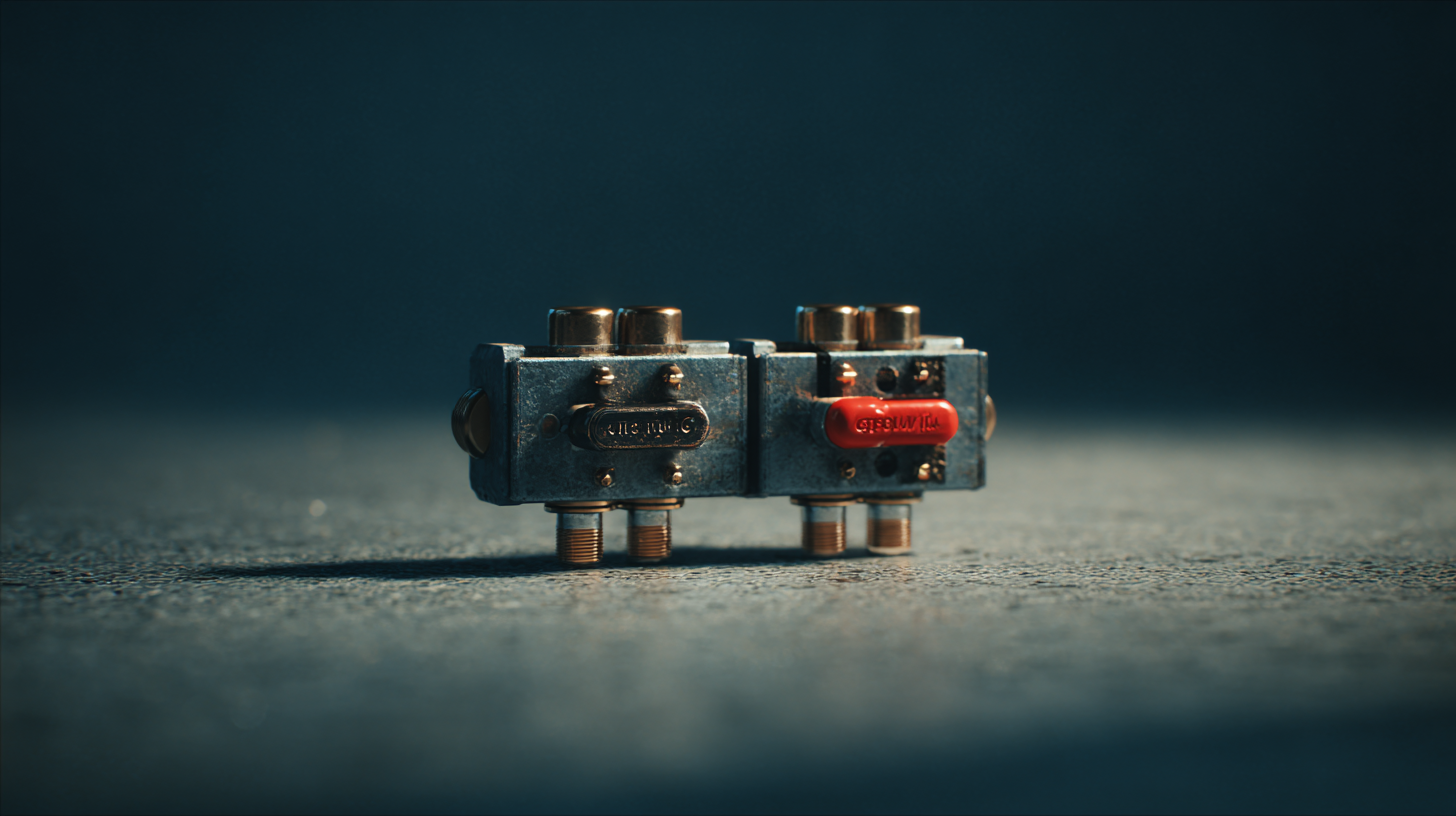
-
Home
-
About Us
-
Products
-
News
-
Blog
-
Contact Us
Leave Your Message

In today's rapidly evolving electrical systems, the role of expulsion fuses has become increasingly critical yet complex. These devices, designed to safeguard electrical equipment by interrupting faults, face a myriad of challenges that can significantly impact their performance and reliability. According to a recent report by the Institute of Electrical and Electronics Engineers (IEEE), approximately 30% of electrical system failures can be attributed to inadequacies in protective devices, including expulsion fuses. As modern systems demand higher efficiency and resilience, understanding the limitations and operational hurdles posed by expulsion fuses is essential for engineers and system designers. This ultimate guide delves into the intricacies of expulsion fuses, exploring their design, operational challenges, and the best practices to enhance their effectiveness in maintaining system integrity amidst the growing complexities of contemporary electrical infrastructure.

Expulsion fuses play a crucial role in electrical systems, acting as a protective mechanism against overloads and short circuits. These devices are designed to operate automatically, disconnecting faulty sections of a network to prevent damage to equipment and ensure system reliability. The primary function of an expulsion fuse is to interrupt the circuit when excessive current flows, and it does so by employing a unique self-clearing mechanism that expels the molten conductive material, effectively isolating the fault.
The importance of expulsion fuses cannot be overstated in modern electrical infrastructure. They contribute to safety by minimizing the risk of electrical fires and equipment damage, hence protecting both facilities and personnel. Additionally, their relatively simple installation and maintenance make them a cost-effective solution for utilities and industries alike. In environments where space is a premium, expulsion fuses provide a compact alternative to circuit breakers, combining efficiency with a small footprint. Their continued use in contemporary systems underscores their lasting significance in ensuring the overall integrity and functionality of electrical networks.
| Dimension | Description | Impact | Examples of Use |
|---|---|---|---|
| Safety | Protects electrical systems from overload and short-circuit faults. | Reduces risk of electrical fires and equipment damage. | Industrial facilities, commercial buildings. |
| Efficiency | Ensures quick disconnection of faulty circuits. | Minimizes downtime and improves system reliability. | Power plants, data centers. |
| Cost-effectiveness | Affordable solution for overcurrent protection. | Reduces maintenance and replacement costs. | Residential electrical systems, small businesses. |
| Durability | Designed to withstand harsh environmental conditions. | Increases lifespan of electrical systems. | Outdoor installations, utility networks. |
| Compliance | Meets safety regulations and industry standards. | Ensures legal and regulatory adherence. | Commercial electrical systems, public infrastructure. |
Expulsion fuses, commonly used in electrical protection systems, face a variety of challenges during implementation that can hinder their effectiveness. One major obstacle is the lack of standardization in design and application. Different manufacturers may produce fuses with varying specifications, making it difficult for engineers to select the appropriate fuse for specific systems. This inconsistency can lead to misapplications, resulting in either inadequate protection or unnecessary operational failures.
Another challenge is the environmental impact associated with the disposal of expulsion fuses. As industries strive to reduce their carbon footprint and manage waste effectively, there's an increasing need to consider the life cycle of components like fuses. Outdated practices can lead to the release of harmful substances—similar to the growing concern surrounding microplastics—into the environment. Implementing new regulations and innovative removal techniques is essential for ensuring that the installation and disposal of expulsion fuses do not contribute to larger ecological issues. This multifaceted approach will not only enhance system reliability but also promote sustainability in modern electrical systems.

When selecting and installing expulsion fuses in modern electrical systems, it is crucial to adhere to best practices to ensure reliability and safety. According to the IEEE Power and Energy Society, effectively choosing an expulsion fuse involves assessing critical parameters such as voltage rating, current-carrying capacity, and the specific environmental conditions where the fuse will operate. For instance, fuses designed for outdoor applications must withstand various weather conditions while providing optimal protection, which is vital for maintaining system integrity.
Installation practices also play a significant role in the performance of expulsion fuses. The National Electrical Manufacturers Association (NEMA) recommends that fuses be installed in locations that offer easy access for maintenance and replacement, minimizing downtime and enhancing safety. Furthermore, proper mounting techniques are essential. A study by the Electric Power Research Institute (EPRI) highlighted that inadequate installation could lead to premature failure rates exceeding 20%, which can severely disrupt power distribution networks. Thus, following established guidelines for installation and selecting the appropriate fuse type based on application-specific data can significantly improve the operational reliability of electrical systems.
Maintaining reliable fuse performance in modern systems is essential for ensuring safety and efficiency. One effective maintenance strategy is implementing a regular testing schedule. This should include both visual inspections and functional tests to confirm that the expulsion fuses operate within their specified parameters. Visual inspections can reveal signs of physical damage, corrosion, or wear, while functional tests, such as current and voltage checks, can identify potential issues before they lead to failures.

Another crucial aspect of maintenance involves ensuring that the fuses are properly rated for their application. This includes examining the load characteristics and environmental conditions to confirm that the selected fuses can handle the necessary operational demands. Additionally, staff training plays a vital role; personnel must be educated on the proper handling and installation of fuses to prevent inadvertent mishaps. By incorporating these testing and maintenance strategies, organizations can significantly mitigate the risks associated with expulsion fuses, ultimately enhancing the reliability of their systems.
The landscape of expulsion fuse technology is evolving, driven by the need to adapt to modern electrical systems and safety standards. Recent industry reports indicate that the global market for expulsion fuses is projected to grow by 4.5% annually, fueled by advancements in materials and design. Manufacturers are focusing on enhanced performance metrics, such as improved interrupting capacity and reduced operating costs, which are essential for utility companies seeking reliable and efficient solutions.
As we look to the future, trends such as smart grid integration and heightened environmental awareness are shaping the development of expulsion fuses. The adoption of eco-friendly materials is on the rise, with a significant percentage of companies transitioning to recyclable and sustainable options. Furthermore, the incorporation of digital monitoring features is expected to enhance the operational reliability of expulsion fuses, allowing for real-time diagnostics and predictive maintenance, which can potentially reduce service interruptions by up to 30%.
Tip: When considering upgrades to expulsion fuse technology, evaluate products based on performance ratings and compatibility with existing systems to ensure seamless integration. Regular maintenance and monitoring can also extend the lifespan of expulsion fuses, ensuring they meet modern demands effectively.